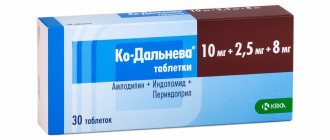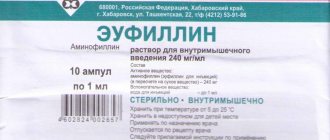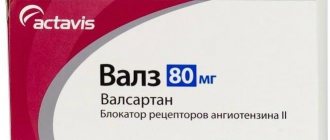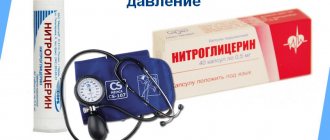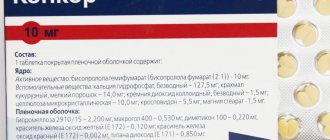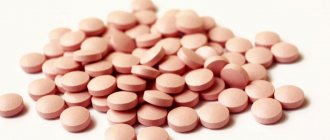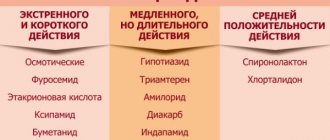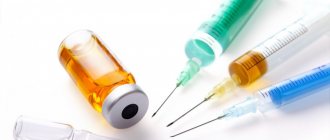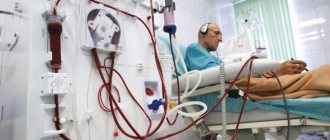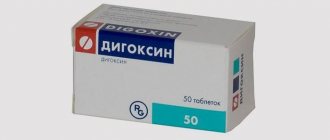Description and instructions for the drug Tenox
Tenox is another medicine for high blood pressure.
It contains amlodipine. This makes it similar to drugs such as Amlodipine and others. The active component of the drug is a calcium channel blocker (slow). It relieves stress in the cardiovascular system and lowers blood pressure. The patient becomes more resistant to physical stress. With long-term use, the hypertrophied heart returns to normal. Blood becomes more fluid and easier to pump through vessels, reducing the risk of blood clots. In this regard, filtration in the kidneys improves. The effect of Tenox in reducing pressure depends on its dose - this process is slow and gives a lasting result. Thus, the peak effectiveness of the drug is recorded after eight hours (on average) and lasts a day. If a course of treatment with Tenox is carried out, then, after discontinuation of the drug, the pressure will remain reduced for another two days, and then will gradually begin to return to the levels at which the therapy began. Tenox is used for:
- Hypertension;
- Angina pectoris;
The release form of Tenox is tablets. As with most similar drugs, tablets are produced with different dosages of the active substance, so that the doctor and patient can choose the most suitable mode of use of the drug. The instructions for the drug Tenox indicate that it should be taken once a day. The dose is selected depending on the patient's condition. The main goal of therapy is to achieve a maintenance - minimal, but effective - dose of Tenox, which will allow a person to improve the quality of his life (it is clear that health in this situation is not fully restored).
Tenox is contraindicated for:
- Unstable angina;
- Severe hypotension and collapse;
- Aortic stenosis or cardiogenic shock;
- Pregnancy, lactation, treatment of minor patients;
- with caution when -
- Various conditions caused by pathologies of the cardiovascular system, the age of the patient;
Side effects and overdose of Tenox
Of the undesirable effects of this medicine, the most common ones can be listed (from one in ten patients to one in a hundred): a strong decrease in blood pressure, heart rhythm disturbances, swelling of the lower extremities, fatigue, headaches, nausea, and so on. In addition, when using Tenox, other side effects from various systems and organs are possible.
Excessive doses of this drug can excessively reduce blood pressure, cause collapse and shock. The patient should rinse the stomach and place him in the “legs above head” position. Medical professionals should monitor the person’s condition and provide symptomatic therapy.
Medicinal doses
This medicine is taken once a day. Orally.
To prevent arterial hypertension, the medicine is usually prescribed to be taken in the range of 2.5 to 5 mg.
Various other diseases are treated with doses of up to 10 mg, strictly as prescribed by the attending physician. Such doses are typical for the relief of acute attacks and long-term work to cure chronic diseases of the cardiovascular system. Some medical regimens are reflected in detail in the official instructions for Tenox.
Side effects
Undesirable effects of this drug are divided by frequency of occurrence. So, common side effects include the following:
- heartbeat;
- hypotension;
- peripheral edema;
- tides;
- cranialgia;
- dizziness;
- apathy;
- fatigue;
- drowsiness;
- abdominalgia;
- nausea.
Sometimes the following conditions can make themselves felt:
- ;
- vasculitis;
- orthostatic hypotension;
- dyspnea;
- nightmares;
- mood lability;
- anxiety;
- nervousness;
- depression;
- paresthesia;
- tremor;
- defecation disorder;
- vomit;
- thirst;
- flatulence;
- anorexia;
- pollakiuria;
- gynecomastia;
- nocturia;
- erythematous rash;
- itching;
- convulsions;
- myalgia;
- arthralgia;
- double vision;
- conjunctivitis;
- violation of accommodation;
- rhinitis;
- xerophthalmia;
- perversion of taste;
- mass change;
- tinnitus;
- hyperhidrosis;
- nose bleed;
- chills.
The following manifestations may occur extremely rarely:
- development, aggravation of CHF;
- syncope;
- migraine;
- pain in the HA;
- tachyarrhythmia;
- bradycardia;
- agitation;
- convulsions;
- diarrhea;
- ataxia;
- jaundice;
- increased transaminase activity;
- malaise;
- increased appetite;
- gastritis;
- amnesia;
- pancreatitis;
- pigmentation disorder;
- dry mouth;
- asthenia;
- hepatitis;
- peripheral neuropathy;
- poly-, dysuria;
- impotence;
- dermatitis;
- gum hyperplasia;
- Quincke's edema;
- hyperglycemia;
- hives;
- myasthenia gravis;
- muscle cramps;
- parosmia;
- thrombocytopenia;
- erythema multiforme;
- cough;
- cold clammy sweat.
Release forms and analogues
The only form of release is tablets, which may contain 5 or 10 mg of amlodipine maleate. The following additional components are used: cellulose, starch, silicon dioxide and magnesium stearate. One package contains 30 or 90 tablets. The medicine should be stored at a temperature of no more than 30 °C. The shelf life is 4 years. Tenox must be dispensed with a doctor's prescription.
Its analogues are:
- Norvasc (original amlodipine);
- Normodipine;
- Amlotop;
- Cardilopin;
- Amlovas.
Your doctor should advise you which drug to choose. If problems arise during treatment, then you cannot do without consulting a specialist. It is impossible to independently adjust antihypertensive therapy, as this can cause a worsening of the condition.
Drug interactions
It is possible to enhance the antianginal and antihypertensive effect of slow calcium channel blockers when used together with thiazide and loop diuretics, ACE inhibitors, beta-blockers and nitrates, as well as enhance their antihypertensive effect when used together with alpha1-blockers, antipsychotics.
Although negative inotropic effects have not generally been observed in amlodipine studies, some calcium channel blockers may enhance the negative inotropic effects of antiarrhythmic drugs that cause QT prolongation (eg, amiodarone and quinidine).
Simultaneous repeated use of amlodipine at a dose of 10 mg and simvastatin at a dose of 80 mg leads to an increase in the bioavailability of simvastatin by 77%. In such cases, the dose of simvastatin should be limited to 20 mg.
Antiviral drugs (for example, ritonavir) increase plasma concentrations of slow calcium channel blockers, incl. amlodipine.
With the simultaneous use of sympathomimetics and estrogens, the antihypertensive effect may be reduced due to sodium retention in the body.
Neuroleptics and isoflurane enhance the antihypertensive effect of dihydropyridine derivatives. With the simultaneous use of inhalation anesthesia, the hypotensive effect may be enhanced.
With simultaneous use of amiodarone, the antihypertensive effect may be enhanced.
With simultaneous use of lithium carbonate, manifestations of neurotoxicity (including nausea, vomiting, diarrhea, ataxia, tremors and/or tinnitus) are possible.
With simultaneous use, orlistat reduces the antihypertensive effect of amlodipine, which can lead to a significant increase in blood pressure and the development of a hypertensive crisis.
With the simultaneous use of indomethacin and other NSAIDs, the antihypertensive effect of amlodipine may be reduced due to inhibition of prostaglandin synthesis in the kidneys and fluid retention under the influence of NSAIDs.
With simultaneous use of quinidine, the antihypertensive effect may be enhanced.
Calcium supplements may reduce the effect of slow calcium channel blockers.
With simultaneous use of diltiazem (CYP3A4 isoenzyme inhibitor) at a dose of 180 mg and amlodipine at a dose of 5 mg in elderly patients (69 to 87 years) with arterial hypertension, an increase in the bioavailability of amlodipine by 57% was observed. Concomitant use of amlodipine and erythromycin in healthy volunteers (18 to 43 years of age) does not lead to significant changes in amlodipine exposure (22% increase in AUC). Although the clinical significance of these effects is unclear, they may be more pronounced in older patients. Potent inhibitors of the CYP3A4 isoenzyme (for example, ketoconazole, itraconazole) may increase the plasma concentration of amlodipine to a greater extent than diltiazem
Amlodipine and inhibitors of the CYP3A4 isoenzyme should be used with caution.
There are no data on the effect of inducers of the CYP3A4 isoenzyme on the pharmacokinetics of amlodipine. Blood pressure should be carefully monitored while using amlodipine and inducers of the CYP3A4 isoenzyme.
Interactions and special instructions
Microsomal oxidation in the liver reduces the effectiveness of the drug, so substances that enhance oxidation block the effect of Tenox.
The following drugs reduce effectiveness:
- Non-steroidal anti-inflammatory drugs;
- Sympathomimetics;
- Substances with high calcium content;
- Estronens.
Substances that potentiate the effect, some of them are used in combination in the treatment of hypertension and coronary artery disease:
- Diuretics, especially loop diuretics;
- Adrenergic blockers;
- Angiotensin converting enzyme antagonists;
- Inhibitors of calcium transport channels of other groups;
- Nitrates;
- Quinidine.
Does not affect the activity of digoxin and warfarin, amlodipine.
Combined use with lithium preparations can cause increased toxicity and the appearance of nausea, abdominal pain, ataxia, diarrhea, and tinnitus.
During therapy it is necessary:
- Monitor your weight;
- Reduce salt and fluid intake - prevention of edema;
- Eat right, control your intake of fatty and sweet foods;
- Measure your blood pressure daily;
- Periodically consult a dentist;
- Take a general blood test and biochemistry;
- Monitor the condition of the genitourinary and digestive systems.
Dosage of the drug
It has already been written that the product is available in the form of tablets with a dosage of 5 and 10 mg.
Tenox tablets 5 mg per day are usually prescribed by a doctor for hypertension and angina, provided there are no prohibiting factors. The maximum dosage in extreme cases is tenox 10 mg. The manufacturer calls the maintenance dose 2.5-5 mg per day.
For stable angina, the patient is prescribed Tenox 10 mg tablets. 5 mg is used to prevent pathology. In case of liver failure, the drug intake is reduced by half - that is, to the initial dosage of 2.5 mg. This allows you to achieve a hypotensive effect.
A dosage of 5 mg is called antianginal
It is taken with caution. It is worth noting that renal failure cannot affect the use of the drug, and therefore the dose does not change
Elderly patients must carefully monitor their intake of the drug when taking Tenox tablets, and also record tonometer readings in the morning and evening so that the doctor can determine the effect of the drug on the clinical picture. The dosage does not change in cases where the patient also simultaneously uses ACE inhibitors, beta blockers.
Contraindications for use
Inside.
For arterial hypertension, the initial dose is 5 mg 1 time / day; maintenance - 2.5–5 mg/day; maximum - 10 mg/day.
For exertional angina and angiospastic angina, the drug is prescribed at a dose of 5–10 mg/day in one dose.
For patients with low body weight or short stature, elderly people, and those with impaired liver function, Tenox® is prescribed as an antihypertensive agent at an initial dose of 2.5 mg, and as an antianginal agent - at a dose of 5 mg.
When using the drug as part of combination therapy with thiazide diuretics, beta-blockers and ACE inhibitors, no dose adjustment is required.
When prescribing the drug to patients with renal failure, no change in dosage regimen is required.
What is AG
A fairly common disease, older people are most often affected. It is characterized by a persistent increase in blood pressure. This disease is dangerous because, over a long period of time, it negatively affects the condition of internal organs.
In arterial hypertension, the most susceptible to damage are:
- Kidneys - persistent high blood pressure levels lead to the development of chronic renal failure;
- Heart - heart failure develops, hypertrophic changes in the left ventricle are observed, as a result of increased work of the heart;
- Cerebral vessels - with high blood pressure, there is a risk of developing a hemorrhagic stroke (since the vascular wall becomes thinner in places, an aneurysm can form; with sudden jumps in blood pressure, the vessel can burst, which will lead to hemorrhage);
- The vessels of the retina are the first to suffer from high blood pressure numbers (with hypertension, there is a significant increase in the vessels of the retina, its detachment is possible, which leads to loss of vision in patients).
In order to protect yourself from such phenomena, it is necessary to constantly carry out antihypertensive therapy. To do this, you can use the drug "Tenox".
Contraindications
Tenox is contraindicated for:
- Individual intolerance or the occurrence of allergic reactions to the components of the drug;
- Arterial hypotension (low blood pressure);
- Disorders of hematopoiesis from the left ventricle;
- Angina pectoris;
- After myocardial infarction due to heart failure.
The drug is not used to treat children; it is practically not prescribed to older people.
During the first few days of Tenox therapy, it is not recommended to drive or perform dangerous work that requires high alertness. After a month's course of treatment with the drug, in the absence of headaches, dizziness and drowsiness, it is permissible to return to the above-mentioned tasks.
There are currently no statistical data on the use of Tenox during pregnancy and lactation. The drug can be used in all trimesters with sufficiently low acceptable risks for the fetus relative to its benefits for the mother's body. It is not advisable to use the drug during lactation and it is recommended to consult a pediatrician.
Tenox price
The cost of Tenox may vary depending on the region and pharmacy in which the product is sold. The cost is also affected by the content of the active substance in the tablets. That is, tenox 5 mg and tenox 10 mg of amlodipine will differ significantly in price.
The last factor influencing the cost of the product is the number of tablets in the package. As practice shows, if you need to take the drug on an ongoing basis, then it is better to take a larger number of tablets, since in the end they will cost much less. Cost in a number of regions for 30 tablets per package (amlodipine 5 and 10 mg, respectively):
Find out your risk level for heart attack or stroke
Take a free online test from experienced cardiologists
Testing time no more than 2 minutes
7 simple questions
94% test accuracy
10 thousand successful tests
- Moscow : 252 rubles and 470 rubles;
- Irkutsk : 247 rubles and 481 rubles;
- St. Petersburg : 233 rubles and 475 rubles;
- Yekaterinburg : 250 rubles and 511 rubles;
- Novosibirsk : 246 rubles and 437 rubles.
As you can see, the cost ranges from 230-260 rubles for Tenox 5 mg tablets. The 10 mg medicine costs about 200 rubles more. You can buy this or that drug only with the permission of a doctor, since the effectiveness and safety can only be assessed from the point of view of a classified specialist.
Price (in Russia)
5 mg of medication – 250-280 rubles per package, 10 mg – 470-500 rubles. Sold by prescription in all pharmacies in Russia, the cost may vary depending on the region.
Therapy for chronic diseases must be formulated correctly. So that the drugs potentiate each other’s effect to the required extent, do not cancel each other, and do not create side symptoms. To do this, before starting treatment, you should conduct a detailed diagnosis of the pathology and concomitant diseases, determine the stage and severity.
While taking this medication, the patient should periodically visit a cardiologist and check the condition of the body and the effectiveness of the drug. Due to the occurrence of unpleasant effects, the treatment characteristics should be changed.
Tenox, amlodipine, a substance that plays an important role in antihypertensive and antianginal therapy, is widely prescribed, effective, and commercially available.
TENOX - release form, composition and packaging
Pills
white or almost white, round, biconvex, with a chamfer and a notch on one side.
| 1 tab. | |
| amlodipine maleate | 6.42 mg, |
| which corresponds to the content of amlodipine | 5 mg |
[PRING] microcrystalline cellulose, pregelatinized starch, sodium carboxymethyl starch, colloidal anhydrous silicon dioxide, magnesium stearate.
10 pieces. - blisters (3) - cardboard packs. 10 pcs. - blisters (9) - cardboard packs.
Pills
white or almost white, round, biconvex, with a chamfer and a notch on one side.
| 1 tab. | |
| amlodipine maleate | 12.84 mg, |
| which corresponds to the content of amlodipine | 10 mg |
[PRING] microcrystalline cellulose, pregelatinized starch, sodium carboxymethyl starch, colloidal anhydrous silicon dioxide, magnesium stearate.
10 pieces. - blisters (3) - cardboard packs. 10 pcs. - blisters (9) - cardboard packs.
| Pills | 1 tab. |
| amlodipine (maleate form) | 5 mg |
10 pieces. — contour cell packaging (3) — cardboard packs. 10 pcs. — contour cell packaging (9) — cardboard packs.
| Pills | 1 tab. |
| amlodipine (maleate form) | 10 mg |
10 pieces. — contour cell packaging (3) — cardboard packs. 10 pcs. — contour cell packaging (9) — cardboard packs.
Pills
white or almost white, round, biconvex, with a chamfer and a notch on one side.
| 1 tab. | |
| amlodipine maleate | 12.84 mg, |
| which corresponds to the content of amlodipine | 10 mg |
[PRING] microcrystalline cellulose, pregelatinized starch, sodium carboxymethyl starch, colloidal anhydrous silicon dioxide, magnesium stearate.
10 pieces. - blisters (3) - cardboard packs. 10 pcs. - blisters (9) - cardboard packs.
Indications and rules of admission
The use of amlodipine is possible in two cases:
- Arterial hypertension.
- IHD: stable and Prinzmetal angina (vasospastic).
Tenox can be prescribed independently, but is more often used in combination with other antihypertensive or antianginal drugs. Dose adjustment is not required in elderly people or in cases of impaired renal function. Although dosages should be increased gradually
If liver failure is detected during treatment, caution should be exercised. This is due to the fact that the drug is inactivated by the liver, and if the functioning of the organ is impaired, then the accumulation of the drug in the body is possible
In this case, its action will be unpredictable.
According to the instructions for use, Tenox is taken once a day. This may be morning or evening, depending on the treatment regimen for arterial hypertension or angina pectoris. The tablet is taken before meals or after meals. It all depends on the desire and tolerance of treatment. Start with small doses. After 2–4 weeks, the dosage can be increased if the desired effect is not achieved.
Contraindications for use
The drug "Tenox" is prescribed for the treatment of high blood pressure. Tablets are used as a stand-alone remedy or as an additional component along with other medications.
The medicine is also used for stable and unstable angina, as well as Prinzmetal angina. In this case, the drug is also used as monotherapy or as part of complex treatment.
There are a number of pathologies for which it is prohibited to take Tenox. These include the following:
- Low blood pressure less than 90 mm Hg.
- Obstruction of the left ventricle of the heart.
- Heart failure after a heart attack.
- Individual intolerance to the components of the medication.
Children under 18 years of age are also not allowed to use the product.
If the heart function is impaired, Tenox is contraindicated
pharmachologic effect
Due to its composition, the drug can have a hypotensive as well as antianginal effect.
The active component blocks calcium channels, reducing the passage of ions into the cell through the membrane.
By expanding the coronary and peripheral arteries, the drug reduces ischemia, peripheral vascular resistance, the heart's need for oxygen, and preload on the myocardium.
The product effectively prevents spasms of large vessels. In people suffering from stable angina, the drug increases exercise tolerance, the intervals between attacks, and reduces the frequency of taking nitroglycerin.
The antihypertensive effect causes a vasodilating effect on vascular smooth muscle fibers. In case of hypertension, the therapeutic effect lasts for a day.
Additional properties of Tenox include the following:
- antiatherosclerotic;
- cardioprotective;
- increased glomerular filtration;
- natriuretic;
- reduction of LV hypertrophy;
- decreased platelet aggregation.
A significant decrease in pressure is observed 5-10 hours after administration, the effect lasts 24 hours.
When the drug is discontinued after long-term use, the hypotensive effect lasts for another two days, and then within a week the blood pressure numbers return to their original values.
The product does not affect lipid content or metabolism; it is suitable for patients suffering from asthma, gout, and diabetes.
Pharmacological action and composition
Release form of the drug
The main active ingredient of this drug is amlodipine. Tenox tablets contain it in the form of amlodipine maleate. There are dosages of five and ten milligrams.
This drug has a pronounced hypotensive effect. It is achieved by blocking dihydropyridine receptors located in the smooth muscles of the vascular wall. The mechanism of action of this drug is based on blocking the passage of calcium ions into the muscle cell.
As you know, muscle contractility is regulated by an ion pump. When sodium ions pass into the cell, from the intercellular substance, depolarization occurs, which stimulates the cell to contract. During the transition of sodium into the cell, a slight influx of calcium ions occurs, and these particles are also transported into the cell through their own specific “portals” (channels) located on the cell membrane. Calcium has a stronger potential than sodium, and is able to significantly stimulate the production of ATP and increase cellular metabolism. In the case of smooth muscles, spasms occur. When taking Tenox, these “portals” are blocked, calcium does not enter muscle cells, and they do not contract, which leads to vasodilation and a decrease in overall peripheral vascular resistance. The lower the vascular resistance, the lower the blood pressure.
Tenox, by lowering blood pressure, reduces the load on the heart, reduces its need for oxygen, dilates the coronary vessels, which leads to the elimination of myocardial ischemia. The antianginal effect leads to increased resistance of patients to physical activity and reduces the manifestations of angina pectoris.
The effect of tablets on the body
There are special proteins in cell membranes that regulate the flow of calcium. This element causes contraction of the muscles of blood vessels and their narrowing. Such proteins are called calcium channels.
When entering the body, amlodipine binds to receptors and blocks calcium channels. As a result, blood vessels dilate and blood pressure decreases. In this case, the drug affects not only peripheral vessels, but also coronary ones. This reduces cardiac ischemia and helps eliminate pain during an attack of angina. This action allows the patient to reduce the dosage of Nitroglycerin. The pressure decreases smoothly and gradually. The heart rate does not increase.
The effect of the drug begins 2-4 hours after administration. The effect lasts for about a day. The absorption of the drug does not depend on food intake. Blood pressure becomes stable after about 7 days of regularly taking the pills.
Cost and analogues
The price of the drug depends on the dosage and varies from 300 to 500 rubles. If you need to replace Tenox, it will not be difficult to find analogues. Absolute analogues of drugs containing amlodipine:
- Amlodipine;
- Norwax;
- Agent;
- Azomex.
The cost of domestically produced analogues is much lower than Tenox tablets and starts from 50 rubles for 10 tablets at a dosage of 5 mg.
If you are intolerant to amlodipine, you should consult your doctor about changing the drug. Full analogues of the drug Tenox in this case will have the same side effects, since they contain the same active substance. A replacement drug should be selected from the group of calcium channel blockers, but with a different active ingredient in the composition.
In some cases, the doctor may suggest replacing Tenox with a medicine from another group, for example, ACE inhibitors. Sometimes patients are resistant to the effects of calcium channel blockers or demonstrate intolerance to any drugs in this group. In this case, it is advisable to take combination medications with diuretics or carry out monotherapy with ACE inhibitors.
There are complete analogues of Tenox with the same active ingredient
Dosage regimen and instructions
The instructions for use of Tenox are extremely simple - the patient must drink only one tablet of the drug at a strictly defined time. This is necessary to ensure complete control over blood pressure levels. In this case, the time of administration does not matter - the drug does not lose effectiveness if taken with meals, before meals or after a meal. To develop a habit, cardiologists recommend setting an alarm in the morning and taking a pill at the same time every day.
The prolonged effect implies a slow release of the active substance. To ensure this effect, the tablet should be swallowed whole with a small amount of food. The tablet must not be chewed, dissolved or crushed.
In addition to the treatment of hypertension, taking Tenox is justified for angina pectoris, but in this case it is important to consult a doctor about the dosage and treatment regimen. Therapy is often started with Tenox 5 mg per day.
If the patient tolerates the medicine well and this amount of the active substance is sufficient to normalize blood pressure, treatment is continued without changing the dosage. In cases where the effect of the drug in a low dosage is not enough, after a few weeks the amount of the active substance is increased to 10 mg
Therapy is often started with Tenox 5 mg per day. If the patient tolerates the medicine well and this amount of the active substance is sufficient to normalize blood pressure, treatment is continued without changing the dosage. If the effect of the drug in a low dosage is not enough, after a few weeks the amount of the active substance is increased to 10 mg.
Tenox has a prolonged effect, so taking one tablet per day is enough
TENOX - side effects
Determination of the frequency of side effects (WHO): very often (>1/10), often (>1/100 to <1/10), sometimes (>1/1000 to <1/100), rarely (from >1/10,000 to <1/1000), very rare (from <1/10,000, including isolated reports).
From the cardiovascular system:
often - palpitations, marked decrease in blood pressure, orthostatic hypotension, peripheral edema (swelling of the ankles and feet), flushing of the facial skin; sometimes - excessive decrease in blood pressure, orthostatic hypotension, vasculitis, shortness of breath; rarely - development or worsening of heart failure; very rarely - migraine, syncope. Some adverse effects observed in individual patients cannot be differentiated from symptoms of the natural course of the underlying disease: myocardial infarction, arrhythmias (very rarely - bradycardia, ventricular tachycardia and atrial fibrillation), chest pain.
Contraindications for the use of Tenox
It is definitely necessary to refrain from using drugs for the following diseases and painful conditions:
- Arterial hypotension in severe form;
- Persons under eighteen years of age;
- If collapse occurs;
- In case of cardiogenic shock;
- In case of post-infarction hemodynamically unstable heart failure;
- In case of hypersensitivity to dihydropyridine.
In addition, there are a number of diseases, the presence of which imposes some restrictions and requires care when prescribing this drug.
Experts include:
- Arrhythmia;
- Stenosis;
- Primary hypotension;
- Cardiomyopathy;
- First post-infarction month;
- Combination with the isoenzyme Cytochrome P450 3A4.
Side effects
The drug Tenox is usually quite well tolerated by patients, and side effects are observed only in cases of intolerance to the active substance or when the dosage is exceeded.
During the period of adaptation of the body to the action of the drug, dizziness, nausea, loss of appetite and loss of strength may occur. Such side effects do not require treatment as they go away on their own after a few days. These body reactions are due to a strong hypotensive effect.
If the patient began therapy with large dosages, symptoms of hypotension may appear - too low blood pressure, slow pulse, loss of strength, constant drowsiness and dizziness. If the tonometer readings are below 120 to 80, you should consult with a specialist about reducing the dosage of the drug, since such readings can be dangerous for hypertensive patients.
In rare cases, Tenox for hypertension and pressure can cause the following reactions:
- indigestion;
- diarrhea or constipation;
- loss of appetite;
- stomach ache;
- heart rhythm disturbance;
- swelling of the legs;
- dry mouth;
- allergic reactions.
Disorders from the digestive system usually go away on their own after a few days and do not require treatment. You should consult a doctor if you experience symptoms of nervous system dysfunction and arrhythmia. Dry mouth may indicate intolerance to the medication.
In case of severe edema, diuretic therapy should be supplemented. The doctor may also recommend a combination drug to replace Tenox.
Allergic reactions when taking Tenox usually include rashes and hives. If a rash appears, you should consult a doctor and ask about replacing the medication with a drug with similar properties, but a different composition.
At the beginning of use, dizziness and weakness may occur, but they will gradually disappear
Special instructions for use of Tenox
Each product requires careful study and monitoring during use. Tenox with a high content of amlodipine is purchased exclusively by prescription, and therefore requires precautions during administration, since improper use of the drug without taking into account associated factors leads to an undesirable result or reduces the effectiveness of the drug. .
From the very beginning of taking the drug, the patient’s body weight should be carefully monitored, as advised by doctors. In some cases, a special diet is prescribed, which takes into account sodium intake. When taking Tenox, the manufacturer recommends visiting a dentist and maintaining dental hygiene at the required level. This condition is prescribed to prevent the growth of gum tissue, prevent pain or bleeding.
Patients with short stature or low body weight, or with reduced liver function, receive lower doses of Tenox. In some cases, the doctor prescribes T ½ amlodipine to a patient with liver dysfunction.
For those patients who are involved in transport management or other hazardous working conditions, the instructions state that use is possible. The only “but” is that at first the patient needs to do the work extremely carefully, since the product can cause drowsiness and dizziness. If such side effects occur, the patient must exercise maximum caution when working with vehicles and machinery.
How does it interact with other drugs?
When taking Tenox along with other drugs, you should take into account the following points:
- The use of the drug in combination with azithromycin, clotrimazole, erythromycin can lead to an increase in plasma concentrations of amplodipine. Therefore, patients receiving such inhibitors should be under close medical supervision. Rifampicin, St. John's wort extract and other drugs should also be taken into account.
- When taken with antipsychotics, amiodarone, quinidine and alpha1-adrenergic receptor blockers (prazosin, yohimbine, phentolamine), the medicinal effect of amplodipine tends to increase.
- The simultaneous use of Tenox with lithium preparations (quilonum, contemnol, lithium carbonate) can increase their effect.
- The effectiveness of the drug is reduced by potassium salts.
The shelf life of the drug is 36 months (3 years) provided that the temperature does not exceed 30°C. Tenox should be kept out of the reach of children.
Tenox price, where to buy
Average price of Tenox depending on dosage:
- Dosage tablets 5 mg No. 30 – 290-300 rubles.
- Tablets 10 mg No. 30 — 520 rub.
Find the nearest pharmacies
- Online pharmacies in RussiaRussia
- Online pharmacies in KazakhstanKazakhstan
WER.RU
- Tenox tablets 10 mg 30 pcs.KRKA [KRKA]
464 rub.
- Tenox tablets 5 mg 30 pcs.KRKA [KRKA]
264 rub.
Europharm* 4% discount using promo code medside11
- Tenox 10 mg 30 tabLOO "KRKA-RUS"
524.3 rub.
- Tenox 5 mg 30 tablets
303 rub.
Pharmacy Dialogue* discount 100 rub. using promo code medside (for orders over 1000 rubles)
- Tenox (tab. 10 mg No. 30)
478 rub.
- Tenox (table 5 mg No. 30)
262 rub.
Pharmacy IFC
- TenoksKRKA/ KRKA-Rus, Russia
556.00 rub.
- TenoksKRKA/ KRKA-Rus, Russia
343.00 rub.
show more
BIOSPHERE
- Tenox 5 mg No. 30 tablet KRKA (Slovenia)
1,780 tenge.
- Tenox 10 mg No. 30 tablet KRKA (Slovenia)
2,740 tenge.
Overdose
Enema in case of overdose
A significant excess of the therapeutic dosage is manifested in a significant expansion of the peripheral venous network and a decrease in blood pressure. Such manifestations stimulate the body to compensatory action, which is manifested in the development of tachycardia, which can develop into atrial flutter, increased sweating, and increased urination. During this time, severe dehydration may develop.
To carry out first aid, they resort to gastric lavage and an enema, which will wash and cleanse the intestinal tract of the drug; sorbent drugs are prescribed orally to capture particles of the drug. Solutions of glucose, rheosorbilact, and Ringer can be administered intravenously. Such infusion therapy will restore the normal volume of the bloodstream, and will allow you to quickly remove metabolites and drug particles from the blood.
To maintain better blood supply to the brain, the patient is placed on his back with his legs elevated. It is necessary to constantly monitor blood pressure, diuresis, heart and lung function. To restore the capacity of calcium channels, calcium gluconate is administered intravenously. Also, to enhance vascular tone, drugs that have a vasoconstrictor effect are taken.

